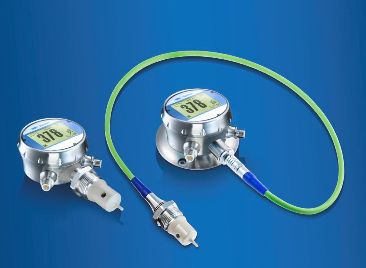Clean in Place (CIP) – Process Safety With the CombiLyz Conductivity Meter
By Stefan Blust, Business Manager Food & Beverage, Baumer
 The food and beverage industry is faced with continually rising quality standards, increasing cost pressure and strict hygienic regulations. As a result, requirements for processing systems and their efficient cleaning are growing. With an accuracy of 1% and a measuring range of 500 μS/cm to 1000 mS/cm, together with fast and accurate temperature compensation, the innovative CombiLyz conductivity meter has the ideal technical properties to support CIP safely and cost-effectively.
The food and beverage industry is faced with continually rising quality standards, increasing cost pressure and strict hygienic regulations. As a result, requirements for processing systems and their efficient cleaning are growing. With an accuracy of 1% and a measuring range of 500 μS/cm to 1000 mS/cm, together with fast and accurate temperature compensation, the innovative CombiLyz conductivity meter has the ideal technical properties to support CIP safely and cost-effectively.
In order to guarantee food safety, production and filling facilities must be cleaned regularly. This is usually done using an automated CIP process (the cleaning of a process engineering system without dismantling it) and is part of a fully automated production process. In the food industry, the correct settings for a CIP process are very comprehensive, since the final CIP processes can often only be defined after the systems have been set up and meaningful tests have been carried out. There are as many requirements as there are cleaning programs. Some systems are cleaned with water only, while chemical cleaning agents like acidic or caustic solutions are used in others. Some systems recover the water from the last rinsing cycle and use it for the first rinsing cycle of the next CIP sequence in order to keep overall running costs low.
Optimum Interaction of Physical Parameters
For all cleaning processes, however, the optimum interaction of different physical parameters is critical. The exact concentration of cleaning agents, while taking into account flow rate, pressure, temperature and time, defines a reproducible process in which the CombiLyz clearly illustrates its superiority.
While the concentration of the acid or alkali is increasing, the conductivity meter controls the specified concentration of the relevant cleaning media. With precise measurements, it ensures no more chemicals are used than necessary. This saves resources and protects the environment. During the phase separation in the CIP return flow, the CombiLyz with its good temperature compensation quickly recognizes different media, even when temperatures fluctuate enormously. This reduces the losses of stored cleaning agents. After one cleaning cycle, the CombiLyz accurately measures the concentration of the remaining chemicals in the rinse water. With this information, the PLC can control the predefined media circuits exactly and reliably using valve nodes. This reduces the risk of food being contaminated by residual chemicals.
Robust Hygienic Design and User-friendliness
The robust sensing element of the meter is made completely of PEEK. In order to meet the requirements of different installations, it is available in lengths of 37 mm, 60 mm and 83 mm. Its compact design reduces the flow resistance in the line, since the pipe cross-section is only minimally influenced. Deposits and impurities can be more easily transported out of the system. The hygienically designed sensing element itself can also be cleaned very easily, which is confirmed by the EHEDG certification and conformity with the 3-A standards. Furthermore, its design is exceedingly durable, and is specially made for use in applications with frequent temperature shocks. This guarantees a long service life, reduces unnecessary downtime and thus increases system availability.
Thanks to its very user-friendly operation by touch screen and its modular housing, the CombiLyz is outstanding in its class.
The conductivity meter is available with or without CombiView. This large, illuminated display can be rotated 360° and can thus be read easily from all directions, even from a great distance. It allows different view options, for example the simultaneous display of conductivity and concentration values as well as fully customizable text (water, alkali or acid etc.). Alarms and configurations can be visualized on the device and can also be transmitted to the higher level controller. With its integrated relay, the conductivity meter can carry out simple control tasks, for example in microbreweries with a low degree of automation, where food safety is of great importance and where valves are to be addressed directly without a process control system. The same applies to retrofitting of systems being upgraded from manually controlled to partly automated processes.
The CombiLyz sensor is available as a compact and as a separate version. The latter is available with cable lengths of 2.5 m, 5 m and 10 m. If required in the application, the display and the sensing element can be installed separately. This offers maximum flexibility for optimum mounting positions.
A wide range of adapters allows hygienic installation in most standard process connections. This makes it the ideal solution for many CIP systems.
Further information visit www.baumer.com/CIP.

































